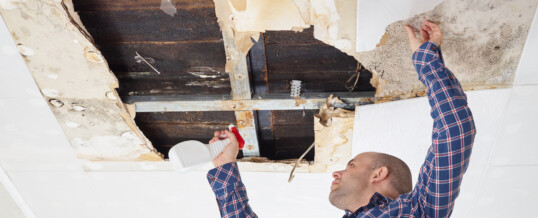
Do you see signs of mold growth in your home?
Often, the mold you see is nothing but the tip of the iceberg. Not only does it damage your home, but it also poses deadly health risks. The last thing you would want is to expose yourself and your family to a silent killer.
To keep your home safe and healthy, it’s crucial to know how to spot these hidden threats early. This article covers the types of mold that could be lurking in the nooks and crannies of your home. Read on to learn how to eliminate and prevent them and keep your home a haven for you and your loved ones.
Mold Prevention
A common misconception about mold is that only dated and old homes are at risk of having it. In fact, mold growth is common and it’s not limited to old houses. This is true for new houses too, and there are several reasons why mold infestation can also occur there.
Condensation, drafts, and hidden leaks are the most common causes of mold growth. This happens because mold is a type of fungus, and the one thing fungi need for optimal growth is water.
Having poor or damaged waterproofing exposes your home to mold. It also leads to other structural damages. Thus, having a waterproofed home is key to a safe home.
Mold often starts from damp, hidden, and dim spaces. Basements, crawlspaces, as well as in-wall plumbing are most at risk. Always make sure that the proper professionals install, inspect, and maintain these areas.
Services like basement waterproofing and crawlspace encapsulation are essential in preventing mold. If you notice cracks in your foundation or leaks at home, get them checked out without delay.
It doesn’t matter if you bought a fixer-upper, remodeling your current home, or having a new house built. Expert waterproofing is your best bet. A waterproofed home is a mold-proofed one.
Mold Treatment and Removal
Are you currently dealing with a mild or severe case of mold infestation? Mold removal is both challenging and dangerous, but not impossible. Although you may want to employ some DIY home solutions, mold is not something to take lightly.
Knowing what you’re up against is important to get the job done right. Various forms of mold range from being a nuisance to being lethal. What’s worse is that it lurks around some of the most common spaces in your home.
Most Common Types of Mold
There are three types of mold found at home: allergenic, pathogenic, and toxigenic. While all three pose health risks, the pathogenic and toxigenic types are best handled by specialists. Research shows that mold can cause several respiratory conditions, including asthma, in children.
Always take precautions when handling any type of mold, even the allergenic type. To know more about the different kinds of mold, here are 10 of the most common ones that grow in our daily living spaces:
1. Alternaria
An allergenic mold is often linked to asthma, allergies, and even pulmonary diseases. Alternaria thrives in bathrooms and around damp and drafty windows. It’s most abundant outdoors but is also found in damp walls, furniture, and vents or air systems at home.
2. Aureobasidium
Aureobasidium is an allergenic mold that grows at an aggressive rate. It’s linked to skin conditions, infections, and respiratory diseases like asthma and pneumonitis.
It also spreads around walls, moist wallpapers, and tile grout. This type of mold is often seen in kitchens and bathrooms.
3. Fusarium
Although it is a type of allergenic mold, Fusarium spores can lead to fusarium keratitis, a severe eye infection. Its distinct coloring appears in various shades of white, yellow, or purplish-pink. It grows in soil and plant matter, so you’ll often see it in basements, gardens, and roofing.
5. Ulocladium
Its black and dark gray color makes it easy to confuse Ulocladium with the deadlier black mold. You’ll see this allergenic mold in condensation-prone spaces like bathrooms, leaky roofs. Water-dependent appliances like washers also attract this mold.
6. Chaetomium
Chaetomium is a type of mold that can either be allergenic or pathogenic. Its colors range from greenish to brownish-grey.
When up-close, you may notice its wispy hair-like structures. Its spores are fast-spreading and often develop in water-damaged areas.
7. Aspergillus
Aspergillus mold is both allergenic and toxigenic. This type of mold has a mossy-green and white color, making it distinct and easy to notice.
It causes pulmonary and respiratory infections and can be carcinogenic. It thrives in damp areas like water-logged walls, basements, and crawlspaces.
8. Acremonium
White and fluffy in appearance, this mold thrives in dark and damp spaces, like basements. It also appears in in-wall plumbing and water-damaged furniture. Acremonium mold is both pathogenic and toxigenic.
9. Trichoderma
As long as an area is moist, Trichoderma can thrive. It has an unmistakable greenish-yellow color and may appear in wispy patches.
Trichoderma is one of the most common forms of mold found in the home. Its spores are also classified as toxigenic, causing severe asthma and lung infections.
10. Stachybotrys (Black mold)
Another toxigenic mold is the most dreaded black mold or Stachybotrys. Serious health complications can arise from black mold. These range from dermatitis to severe fatigue and lung problems.
You might spot this mold in your bathrooms, damaged ceilings, basement, and crawlspace. When you do, call an expert immediately.
Keep the Dangers of Mold at Bay
With enough knowledge of the different types of mold, the last thing you’d want is to welcome them into your home. There is nothing more important than your health and safety. It’s important to protect your home, and in turn, you and your family.
Mold can lurk anywhere, especially in basements, crawlspaces, and foundations. The threats of mold and the health risks associated with it aren’t something you need to deal with alone. Trust the experts, and contact us today at Armored Basement Waterproofing. We can solve teh moisture problem that is leading to the mold growth.
ShareJUN
